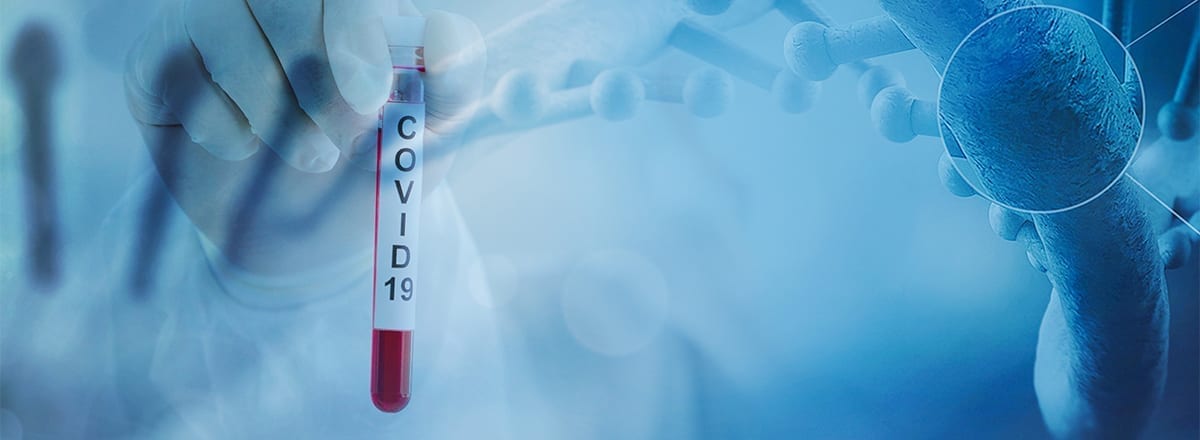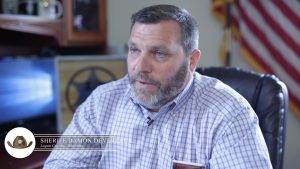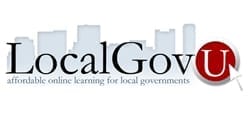
Starting Tuesday the 10th, the OSA started pushing out information on COVID-19. Most of the information was coming from our point of contact for the National Sheriffs’ Association Steve Casey Executive Director Florida Sheriffs’ Association. Below is what I feel is the most important takeaway from what is now the #36 situational awareness email coming into the OSA. These are best practices from national, state, and local governmental agencies and not the OSA or its staff.
JAILS
Intake Screening Arrestees: utilize this link www.ok.gov/CORONAVIRUS%20SCREENING.pdf check for fever over 100 degrees, cough, shortness of breath, recent travel to a high-risk country, exposure to someone who is symptomatic and under surveillance for COVID-19. If 2 out of 3 are present have the individual place a surgical mask on themselves and place them in isolation (a single room with a closed-door). Then the jail’s medical authority should be contacted for further management instructions. Inmates with the above symptoms and exposure risk factors are isolated and tested for COVID-19 per local health authority protocols.
Non-Contact Visitation: If you don’t already have non-contact visitation, consider how you might do this, using either non-contact rooms or video conferencing. Phone visitation is another option.
Contact between inmates and the community during out-trips Medical: To the extent that medical out trips can be safely postponed, that is optimal. This should only be done after a provider documents an order in the patient’s medical record justifying the clinical appropriateness of the delay. Telemedicine is an excellent alternative to out-trips. There are federal regulations governing the types of telemedicine software to be sure they are HIPAA compliant. Jails may want to discuss with their legal counsels the risks and benefits of using readily available non-HIPAA-complaint software (e.g. FaceTime) and then make the best decision for your jail and your community’s health.
Contact between inmates and the community during out-trips: Court Transporting inmates for court appearances places staff and inmates in (sometimes close) contact with the members of the community. There is a risk of bringing infection back into the facility. And if the inmate is ill, the reverse risk is true. Consider reaching out now to the courts with which you interact to have a plan for both situations. As with medical trips, video appearances are a useful tool.
Perform routine environmental cleaning: See the CDC website https://www.cdc.gov/coronavirus/2019-nCoV/summary.html for more detail, but in brief, continue to perform routine cleaning of all frequently touched surfaces. The normal disinfectants that you use are adequate. For infection control (and to help reduce fears among inmates), adopt a liberal approach to inmates who want to disinfect their houses.
Masks: For the moment CDC recommends simple surgical masks for symptomatic patients, and higher efficiency masks for health care workers who are working in close proximity (within 6 feet) of a patient with possible COVID-19. Because, in jails, custody staff working with persons with possible COVID-19 infection share many of the same tasks and exposures as health care workers in the community, it would make sense for custody staff to use the same personal protection as jail medical staff who are working in close proximity of patients. For the moment, this recommendation is to use N-95 masks. In case you have trouble getting N-95 masks, you can use any mask with an N, P, or R letter designation and a 95 or 100 number designation. And if none of these masks is available, use simple surgical masks. As an example of adjusting to shortages of N-95s
Screening staff: Consider screening staff reporting to work. For the moment those guidelines are check for fever over 100 degrees, cough, shortness of breath, recent travel to a high-risk country, exposure to someone who is symptomatic and under surveillance for COVID-19. If 2 out of 3 are present, send them home.
Discouraging “presenteeism” While we worry about absenteeism among staff, another concern is the opposite: presenteeism, which is staff coming to work despite being ill. They pose a risk to other staff and inmates. Explain the risk to staff and encourage them to stay home if they are ill. Depending on your own staff and staffing situation, you MAY want to consider an untested approach: for staff who have no sick or vacation days left, consider allowing staff to stay home penalty-free. On the flip side, to encourage healthy employees to continue to come to work, you might also consider liberalizing restrictions on overtime.
Downsizing: Talk with prosecutors and judges ahead of time to develop a plan if you need to downsize. Are there people you can release on their own recognizance? Do you have a priority list (who do you release if you need to downsize by 5%? 10%? etc.)? In addition to public safety considerations (e.g. alleged crime), prioritization of this list should also take into consideration medical factors: the elderly and people with other underlying health problems are at greatest risk from COVID-19.
PATROL
Data suggests that symptoms may appear in as few as 2 days or as long as 14 days after exposure to the virus that causes COVID-19.
Symptoms can include fever, cough, difficulty breathing, and shortness of breath.
The virus causing COVID-19 is called SARS-CoV-2. It is thought to spread mainly from person-to-person via respiratory droplets among close contacts. Respiratory droplets are produced when an infected person coughs or sneezes and can land in the mouths or noses, or possibly be inhaled into the lungs, of people who are nearby. Close contact may include:
Being within approximately 6 feet of an individual with COVID-19 for a prolonged period of time.
Having direct contact with body fluids (such as blood, phlegm, and respiratory droplets) from an individual with COVID-19.
Practice proper hand hygiene. Wash your hands with soap and water for at least 20 seconds. If soap and water are not readily available and illicit drugs are NOT suspected to be present, use an alcohol-based hand sanitizer with at least 60% alcohol. Alcohol based sanitizers open the pores in skin and may cause transfer of drug into the system.
Due to the nature of the work-related activities performed by Patrol Unit personnel, it will be difficult to implement strict social distancing protocols. Supervisors should evaluate the call type and determine if the call will be left to medical first responders only or if they will respond. If deputy or officer response is necessary, the above social distancing and protective measures will be used.
Have a trained Emergency Medical Service/ Emergency Medical Technician. (EMS/EMT) assess and transport anyone you think might have COVID-19 to a healthcare facility.
If deputies encounter individuals wearing masks during a traffic stop protective protocols will be initiated. Social Distancing can be used such as speaking through a partially opened window to gather enough information to continue with the stop while maintain proper officer safety. The deputy will ask the driver/occupant of the vehicle why they are wearing a mask. Disposable gloves shall be worn to handle any documents from the driver or occupant of the vehicle when the deputy sees a necessity. Propper disinfection protocols will be initiated after the stop.
To help limit any potential exposure to the Coronavirus, the patrol unit will maintain (or have access to) a supply of Personal Protective Equipment (PPE) including:
- Disposable N-95 Masks
- Disposable Surgical Masks
- Disposable Nitrile Gloves
- Hand Sanitizer Dispensers (Individual Use)
- Disinfectant Wipes (Vionex)
- Sanitizing Wipes (Purell)
If close contact occurred during apprehension: Clean and disinfect duty belt and gear prior to reuse using a household cleaning spray or wipe, according to the product label. Follow standard operating procedures for the containment and disposal of used PPE. Follow standard operating procedures for containing and laundering clothes. Avoid shaking the clothes.
FYI for situational awareness.
American Correctional Association
Information on this page is being updated daily
National Association of Counties
Oklahoma State Department of Health (OSDH)
CDC Environmental Cleaning and Disinfection Recommendations
Timeline of COVID-19 Information
Tuesday 3:10pm
This afternoon, President Trump declared a national emergency and mobilizing the full resources of the federal government to respond to COVID-19. A transcript of the President’s remarks can be found here and you can watch the announcement here.
President Donald J. Trump Directs FEMA Support Under Emergency Declaration for COVID-19
(Presidential Proclamation Here)
The federal government continues to take aggressive and proactive steps to address the COVID-19 threat as the health and safety of the American people remain a top priority. Today, President Trump declared a nationwide emergency pursuant to Sec. 501(b) of the Robert T. Stafford Disaster Relief and Emergency Assistance Act, 42 U.S.C. 5121-5207 (the “Stafford Act”). This increases federal support to the Department of Health and Human Services (HHS) in its role as the lead federal agency for the ongoing COVID-19 pandemic response. As a result of the President’s decisive, unprecedented action, FEMA is directed to assist state, local, tribal, territorial governments and other eligible entities with the health and safety actions they take on behalf of the American public. Today’s declaration does not make direct financial assistance available to individuals.
The emergency declaration does not change measures authorized under other federal statutes and HHS remains the lead federal agency directing the federal response to COVID-19. FEMA actions will be in support of HHS and in coordination with state, tribal and territorial governments. Eligible emergency protective measures taken at the direction or guidance of public health officials in response to this emergency, and not supported by the authorities of another federal agency, will be reimbursed strictly under the FEMA Public Assistance program. FEMA assistance will be provided at a 75 percent Federal cost share. Reimbursable activities typically include emergency protective measures such as the activation of State Emergency Operations Centers, National Guard costs, law enforcement and other measures necessary to protect public health and safety.
Presidential Message to the Congress on Declaring a National Emergency Concerning the Novel Coronavirus Disease (COVID-19) Outbreak (March 13, 2020)
(Presidential Message)
Pursuant to section 201 of the National Emergencies Act (50 U.S.C. 1621), I hereby report that I have exercised my authority to declare that the outbreak of coronavirus disease (COVID-19) in the United States constitutes a national emergency. This declaration invokes section 1135 of the Social Security Act, 42 U.S.C. 1320b–5, to allow the Secretary of Health and Human Services to exercise the authority under that section to temporarily waive or modify certain requirements of the Medicare, Medicaid, and State Children’s Health Insurance programs and of the Health Insurance Portability and Accountability Act Privacy Rule throughout the duration of the public health emergency declared in response to the COVID-19 outbreak.
Memorandum on Expanding State-Approved Diagnostic Tests (Full Memorandum Here)
By the authority vested in me as President by the Constitution and the laws of the United States of America, it is hereby ordered as follows: It is the policy of the United States to take proactive measures to prepare for and respond to public health threats, including the public health emergency involving Coronavirus Disease 2019 (COVID-19), which was declared by the Secretary of Health and Human Services (the “Secretary”) on January 31, 2020, pursuant to section 319 of the Public Health Service Act (42 U.S.C. 247d). Our response must include heightened coordination among Federal, State, local, and tribal agencies, and we must offer States the flexibility they need to care for their citizens. In accordance with this principle, the Food and Drug Administration, in coordination with the State of New York, allowed the State flexibility in expediting State-approved COVID-19 testing. Should additional States request flexibility to authorize laboratories within the State to develop and perform tests used to detect COVID-19, the Secretary shall take appropriate action, consistent with law, to facilitate the request.
Contact OPI
If your business or organization has inquiries, recommendations, or industry-specific policy inputs for the federal government, we encourage you to share with the Office of Public Liaison at OPL@who.eop.gov.
For the most up-to-date information, please see the CDC’s website: www.coronavirus.gov.
Thanks,
Joe
Joe Russo
Special Assistant to the President and Director of Business Outreach
White House Office of Public Liaison

















